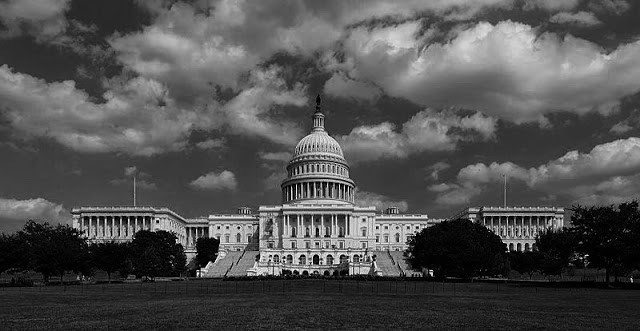A look at who is affected, and the potential economic impact.
Provided by Marc Aarons at Money Managers, Inc.
Right now, many households across the country are contending with the financial pressures resulting from the partial federal government shutdown. About 800,000 federal workers have been furloughed, and about 4 million government contractors are now working for free. Besides the interruption of key services, the closures risk causing a degree of disruption in the economy.1
Nine federal departments have scaled back operations. The list: Agriculture, Commerce, Justice, Homeland Security, Housing and Urban Development, Interior, State, Transportation, and Treasury. (About 240,000 workers have been furloughed by Homeland Security alone.) Even so, many essential federal government services are still being provided. The Social Security Administration is continuing to send out retiree benefits, and the Postal Service is still delivering mail.2,3
The longer the shutdown lasts, the deeper its possible economic impact. Kevin Hassett, who chairs the Council of Economic Advisers, estimates that each week of the shutdown hurts quarterly GDP by 0.13%. If Hassett is correct, then first-quarter growth may already be about 0.5% short of federal government projections. Some analysts think the economy could contract in Q1 if the shutdown drags on through the start of spring.4
What options do furloughed workers have? The gig economy beckons, with short-term jobs that can be left behind with little notice if the shutdown ends. It may come down to driving for rideshare or meal delivery companies or working as a barista or waiter – something with a flexible or alternative schedule. Some can find part-time accounting, editing, or health and safety work. (The New York Times recently noted a turn-of-the-year spike in online job searches by workers at federal agencies.)4
Of course, some furloughed federal workers are barred from accepting interim employment. Those not classified as “excepted” or “exempt” cannot even volunteer while furloughed.3
On January 16, President Trump signed a bill into law to reimburse federal workers for lost wages when the shutdown ends. Furloughed federal employees who are receiving state unemployment benefits will have to return those benefits after they collect their back pay.3,5
As the gridlock continues, these employees and contractors are showing great patience and resourcefulness. Hopefully, they will not have to cope with financial anxieties and hardships much longer.
Marc Aarons may be reached at (714) 887-8000 or Marc@OCMoneyManagers.com
This material was prepared by MarketingPro, Inc., and does not necessarily represent the views of the presenting party, nor their affiliates. This information has been derived from sources believed to be accurate. Please note – investing involves risk, and past performance is no guarantee of future results. The publisher is not engaged in rendering legal, accounting or other professional services. If assistance is needed, the reader is advised to engage the services of a competent professional. This information should not be construed as investment, tax or legal advice and may not be relied on for avoiding any Federal tax penalty. This is neither a solicitation nor recommendation to purchase or sell any investment or insurance product or service, and should not be relied upon as such. All indices are unmanaged and are not illustrative of any particular investment.
MMI Disclosure
Citations.
1 – cnbc.com/2019/01/10/amid-shutdown-thousands-of-federal-workers-file-for-unemployment-.html [1/10/19]
2 – tinyurl.com/ycmnaqfl [1/1/19]
3 – oregonlive.com/business/2018/12/government-shutdown-2018-will-i-get-mail-what-about-social-security-benefits.html [12/26/18]
4 – nytimes.com/2019/01/15/us/politics/government-shutdown-economy.html [1/15/19]
5 – cnn.com/2019/01/16/politics/trump-signs-backpay-bill-government-shutdown/index.html [1/16/19]

Comments are closed